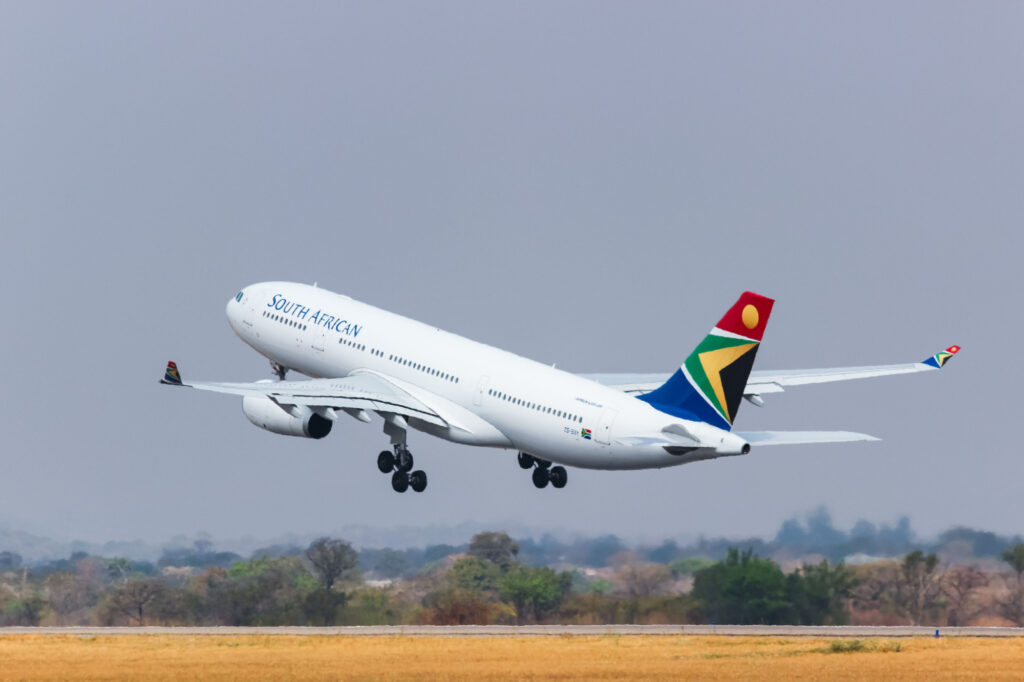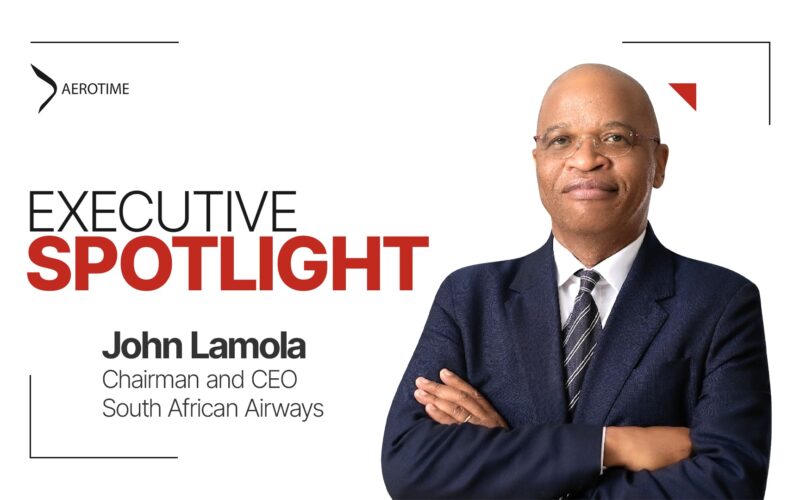South African Airways was once an iconic national carrier, with a history that reached as far back as 1929. However, the last decades were marred by corruption, political interference, and mismanagement. Until 2020 the airline amassed the equivalent of €6 billion in debt and was placed into business rescue, the South African version of US chapter 11 bankruptcy protection, in December 2019.
Even before the global pandemic grounded aviation, the situation at SAA became so dire that the airline stopped flying four of its remaining long-haul routes and much of its domestic and regional network in February 2020, briefly continuing to just London and Frankfurt, before an extremely strict lockdown hit South Africa. In September 2020, operations were suspended. After a year, a re-incarnation of SAA restarted on a very low level from September 2021.
In April 2022, it was announced that the airline would be welcoming a new CEO, with John Lamola, who is also an Associate Professor of Philosophy of Technology at the University of Johannesburg, taking the helm. Lamola has previously worked as CEO for Denel Aviation and served on the board of Airports Company South Africa (ACSA).
In an interview for AeroTime, aviation journalist Andreas Spaeth talks to Professor Lamola about developments at South African Airways and its plans for the future.
Andreas Spaeth: SAA returned in September 2021 on a new, much smaller scale. Do you still believe you have the status of a national carrier?
John Lamola: By law of what is called “the South African act”, SAA has been established as the national carrier, with responsibility for passengers and cargo. Until that act is repealed, SAA has a special status. The only thing that has changed compared to before is the financing challenges of the airline. We had to take a decision that the state is no longer going to capitalize the airline, because there are other priorities for the government. The decision was taken to have a strategic equity partner, merely to assist with the working capital and technical expertise to broaden SAA. [The private partner is the Takatso Consortium, their investment hasn’t materialized as of yet – ed. note]. The name remains, the government remains as a 49% shareholder, maybe taking even more, depending on how things turn out.
Spaeth: Is that progress, compared to the situation before the shutdown?
Lamola: All of us agree that we need an airline that is not encumbered in political and governmental processes. It has to be privatized in terms of how it works, but in a corporate structure of the national carrier.
Spaeth: How much of the old SAA remains?
Lamola: We have reduced our staff to a third of the earlier levels throughout the entire group. We now employ about 2000, versus 6000 before, including SAA Technical and the catering unit. The airline itself is at 20% of former staff levels. Our aim is not to rebuild the old SAA that was flying 54 very expensive aircraft. We’d rather operate as a mid-size airline that takes decisions under commercial considerations, not political ones. We are not going to be told by a minister “fly to Beijing”, or anywhere else.
Spaeth: How did the airline perform since re-establishing operations?
Lamola: Since SAA restarted in September 2021, it has been operationally successful and also financially. In the last quarter of 2022, SAA was profitable. SAA is no longer even technically insolvent, we are producing cash, we are within our cost parameters, and we are doing well, more than what was expected before. [SAA has been allocated the equivalent of €52 million from the 2023 state budget to cover costs – ed. note.]
Spaeth: What does the current SAA fleet consist of?
Lamola: We have one A319, from the three we originally had, and it’s going to be replaced by another A320. Overall, we have six narrow-bodies right now and it will be seven A320s. Our strategy is to take former SAA aircraft, because it’s easier for us. We go to the lessors and negotiate. Taking such airplanes helps us because there is product uniformity.
Overall, we have nine aircraft, including the two wide-bodies, an A340-300 and an A330-300, and [will be] getting a second A330 before the end of May. It will be a sister ship of our current A330. As a state-owned public enterprise, we now have an approval from the minister to acquire six additional aircraft. They will be five additional A320s and one additional wide-body. That’s where the story of the return of the A350 started.

Spaeth: What’s your aircraft strategy for restarting long-haul operations?
Lamola: Fact is that we are the national carrier and, as such, we have an obligation for long-haul airlift capability in South Africa. SAA is the only airline in South Africa that flies wide-bodies. We will restart long-haul operations with our A330s. We then want to retake some of our former A350s currently stored in France. They have been offered to us. We have lessors knocking on our door every day. We said no so far, as we undertake our route studies. But the plan is to retake two A350s and maybe move to the third.
There is a danger, however, of over-emphasizing the A350s for the sake of uniformity of our fleet. But we also have very strong propositions from Boeing, and we are in a major strategic partnership with Kenya Airways, and they fly 787s, so we have to also look for such synergies as well.
Spaeth: Which long-haul routes do you plan to serve?
Lamola: We have been under a lot of pressure to restart our routes to London and the United States by our customers. We have a loyalty program with members who can’t spend their miles, because we don’t have enough international routes. In the United States it’s also a regulatory issue, if you don’t fly for 12 months, you lose your route rights. So, every 12 months we have to plead with the US Department of Transportation to allow us more time. In Heathrow we still have four daily slots that we have leased out, making money for us, two each in the morning and in the evening.
Spaeth: So where will you go first and when?
Lamola: We are ready now to start. From July or August, we will begin to sell flights again to either Sao Paulo or Perth and start operating maybe a month later. The destinations are picked based on empirical research, but, of course, the market changes every few months.
Spaeth: What about returning to Frankfurt?
Lamola: Not at first. We have a relationship with Lufthansa that works very well in Star Alliance, therefore we might also choose to go to Munich. It will be either Munich or Frankfurt. There are indications we might fly from Cape Town to Munich, as Lufthansa is full every day, so that’s what we are looking at. Learning from SAA’s mistake long ago of pulling long-haul flights out of Cape Town, we will go from there to Europe directly from 2026 or earlier.
Spaeth: How will you proceed in fleet development? And how will it be financed?
Lamola: As part of our five-pillar strategy, we have one part called balance sheet value extraction, where we go into the existing assets of SAA. It owns a lot of properties; the plan is to leverage all of that. So, we act on our new fleet strategy. We have been in discussions with Airbus and Boeing. I just came back from Seattle where we sat down to look at the future of the broader SAA fleet.
By 2025, SAA will be a mid-size airline flying about 30 aircraft. We have to look at a market and then we put aircraft there. Not doing that was one of the mistakes of the old SAA. There was no proper empirical research taken on route selection. It was more a capital-driven airline, that’s why SAA bought a huge number of aircraft for billions of dollars. The trigger of the airline industry is that the barriers of entry are low, but the barriers to exit are very high.
Spaeth: SAA currently has a limited domestic and regional network. Will that change?
Lamola: We serve Cape Town and Durban from Johannesburg, and we don’t want to do more, other than also start serving Port Elizabeth. For that we will operate an extra A320 on an ACMI basis. In Africa we currently serve 10 destinations from Accra to Mauritius. That’s good for us, we are targeting high-value, high-volume regional routes. And we will expand. The traffic flows and the market makes sense. The yields in the regional traffic are good so we can make money. But as our domestic routes from Cape Town work so well, we have delayed starting some regional routes and put our metal there.
Spaeth: You have an unusual dual leadership role at SAA how did that come about and is it practical?
Lamola: I was appointed as non-executive chairman in July 2021, with the specific mandate to act in the combination of chairman and CEO. As chairman I have the power of the board and a direct line with the minister of public enterprises. The decision of establishing a new SAA needed this combination, so I am doing that. It has worked. I wish it could be done elsewhere, then we would have less problems. But it depends on the character and the personality of a person holding such a combination of posts. There is a situation where there is an abuse of power, but if you have the consciousness of how to do it, to know when I am the CEO and I don’t abuse my fellow directors and to be able to command respect. My industry knowledge comes from having been CEO of the defence company Denel before, trying to bring their capabilities into civil aviation. 20 years ago, I was also a consultant to SAA.
Spaeth: SAA has seen so many interim and acting CEOs in recent history, changing constantly. Do you plan to stay on longer?
Lamola: I’ve been in my post now for more than one and a half years and I intend to remain there for some time, until SAA has been rebuilt and is going to be great again. But it will be a different SAA.

